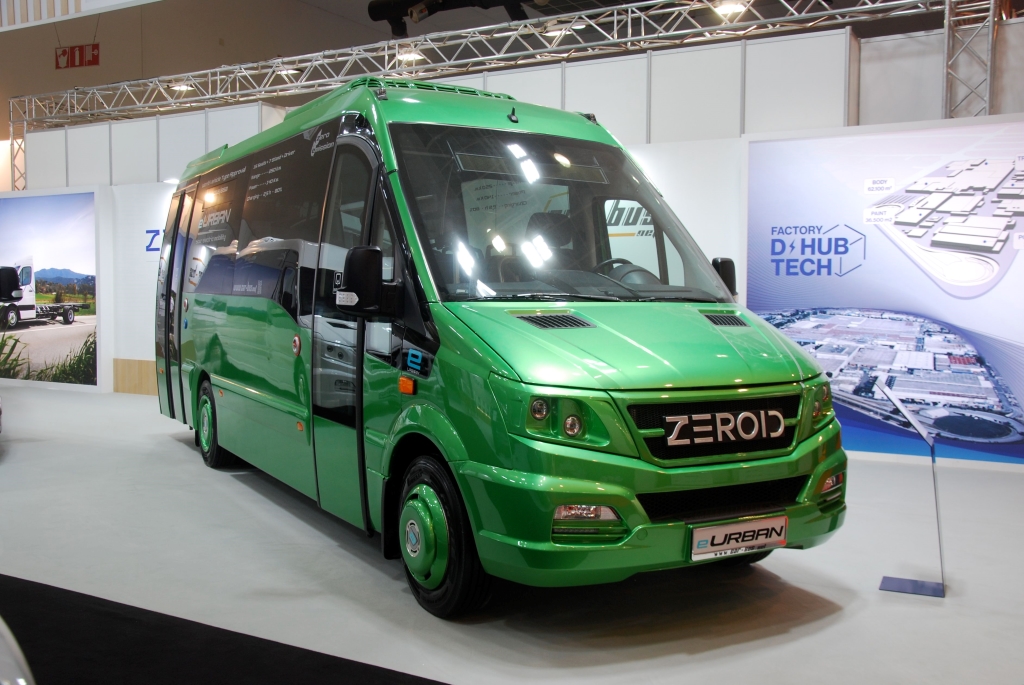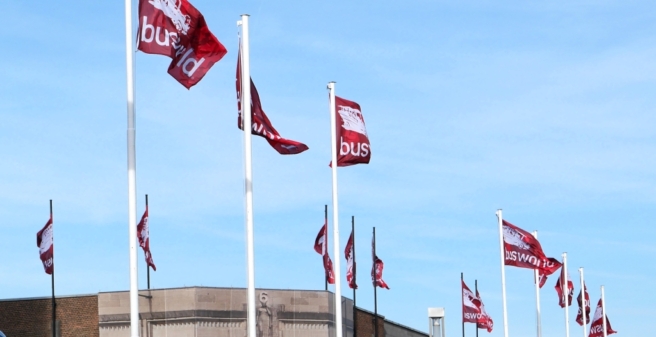
The history of the Busworld trade fair
From 7 to 12 October 2023, the world’s largest bus trade fair “Busworld” took place at the exhibition grounds in Brussels. The trade fair was held for the first time in 1971 at the exhibition centre in the Belgian city of Kortrijk under the name “Car et Bus” (coach and bus). From then on, it was always held in odd-numbered years, alternating with the German IAA (commercial vehicles), with 2017 being the last time in Kortrijk. Busworld had become bigger and bigger, and the Kortrijk exhibition centre was therefore too small, so the event moved to the much larger Expo Brussels site in 2019.
The 50th anniversary edition of Busworld was due to take place in 2021, but something as unfortunate as coronavirus meant that the anniversary event had to be cancelled.
In 2023, Busworld was back in Brussels for the second time. And it was the largest “Busworld” ever held to date. More than 300 buses were on display in nine halls of the exhibition centre (2, 4 to 9, 11 and “Patio”), presented by more than 500 exhibitors. It was not only bus manufacturers and their vehicles that were on show at the stands, but the supplier industry also took the opportunity to demonstrate their products. For example, articulated constructions for articulated buses, pantographs for recharging electric buses on their route, seats for passengers and destination sign boxes, as well as “little things” such as the buttons that passengers can use to request a stop at the next bus stop.
Trends at Busworld 2023
It was noticeable that regular-service buses dominated by far, with comparatively few coaches on display. There is a very simple reason for this: the diesel engine is clearly a discontinued model in bus construction. Public service buses are now actually only ordered as battery-electric or hydrogen buses, and even diesel hybrids are now pretty much “out” for public service buses. There are already manufacturers who only offer buses that run on electricity. Examples include (in alphabetical order) Ebusco, Van Hool and VDL.
Should the emissions standards for diesel buses be tightened once again (keyword: Euro 7 emissions standard), more than one manufacturer (Mercedes, for example) says that it will no longer incur the costs of developing this technology. The time left for Euro 7 until the final ban on diesel engines is too short. It was said: “If buses with Euro 6 are no longer allowed to be registered, we will no longer offer diesel buses.”
The situation is currently somewhat different for coaches. They sometimes have to cover 1000 kilometres without “recharging” (refuelling) – for example for a trip from Bonn to Vienna – and the ranges of battery and hydrogen buses are not yet sufficient for this. But this will also change in the near future, as battery and fuel cell technology is making rapid progress. It has long been said that ranges of 1000 kilometres will soon be available for battery buses.
It was noticeable at this year’s Busworld that more and more manufacturers from all over the world were exhibiting in Brussels – and thus, it should be understood, want to enter the European market. For example, there was the bus manufacturer Zeroid from Spain – from the neighbourhood of Barcelona, which is perhaps why it doesn’t want to be Spanish, but Catalan. There have been exhibitors from China at Busworld for a long time, and Zhongtong was there for the first time this year. With MCV and Geyushi, two manufacturers from Egypt came to Busworld for the first time, and two producers from Brazil (Marcopolo) and India (JBM) also exhibited at Busworld for the first time.
There is a certain trend towards vehicles that are suitable as autonomous shuttles. In addition to well-known specialists such as Navya (now Gama) and Karsan with its autonomous eATAK – a vehicle of this type has been running successfully on regular services in the Norwegian port city of Stavanger for around a year – Unvi from Spain, for example, presented a minibus for the first time that clearly goes in this direction. And Atlas-Auto from Lithuania and Zhongtong from China have joined forces to produce an autonomous minibus.
Enough about general trends, let’s take a look at individual manufacturers and the vehicles they brought to Busworld.
Arthur
A year and a half ago, in April 2022, a new bus manufacturer presented itself at the “Bus2Bus” trade fair in Berlin, which relies on hydrogen and fuel cells for propulsion: Arthur from Planegg near Munich. Although Arthur is based in Planegg, production takes place in Poland – as is the case with many other bus manufacturers.
What seemed like a bold step in the spring of 2022 has since been a success. Not only has the “Arthur H 2” been used as a demonstration vehicle by one transport company or another, but the first vehicles have already been delivered to customers, such as the MPK transport company in Poland’s second-largest city, Krakow. It should be remembered that it is not easy for a newcomer to enter a market in which competitors have not exactly been waiting for a new competitor. It takes a bit of patience …
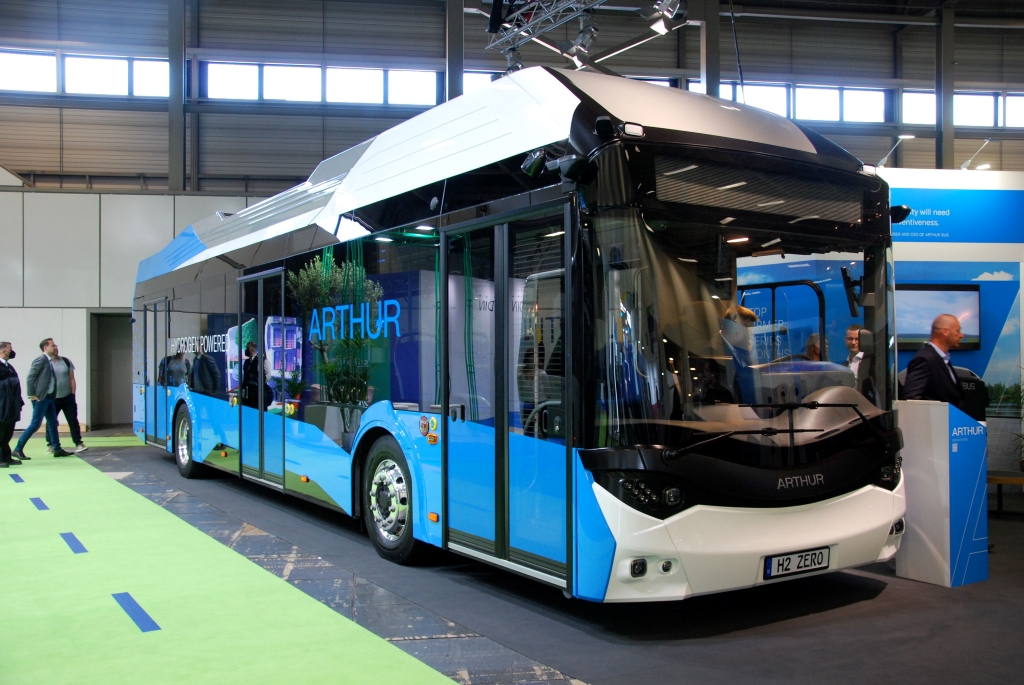
Automecanica Mobility (AM)
One of the surprises at Busworld (at least for the author) was the “new” Romanian manufacturer AM (Automecanica Mobility). New? In fact, the company from the Sibiu region has been around since 1941 and is proud of its more than 80-year history.
At that time, during the Second World War, Romania was allied with Germany, and so military aircraft of the Messerschmitt brand were produced here (under licence). After the Second World War, the production of armaments was replaced by the construction of civilian road vehicles. For example, the chassis of the Romanian lorry brand Roman came from the factory halls near Sibiu.
The factory site is 196,000 square metres in size, the factory halls have a floor area of 92,000 square metres – so the plant can grow.
At Busworld, AM presented its 12-metre-long AM 12 electric city bus, which is a 100% low-floor bus. The batteries come from French manufacturer Actia in Toulouse; depending on customer requirements, Automecanica provides its AM 12 with batteries with the cell chemistry NMC (nickel-metal-cobalt) or LFP (lithium-iron-phosphate). Their storage capacity is up to 420 kWh.
The “AM 12” is 12,097 mm long, an unusual 2,517 mm wide (instead of the usual 2,550 mm) and 3,431 mm high. It can be supplied with two or three double-width doors. The height gives it away: the batteries have found their place on the roof. Automecanica obtains both axles for the vehicle from ZF in Friedrichshafen on Lake Constance. The passenger compartment and driver’s compartment are supplied by two different air-conditioning areas, allowing the driver to adjust the climate at his workplace completely independently so that he feels comfortable.
The self-supporting superstructure is made of stainless steel
AM has big plans for the future. They want to offer a complete family of electric buses, from the smallest AM 6 to the AM 9 and AM 12 to the AM 18 articulated bus, and there are also plans for a coach, the AMT.
AM is also active in the construction of rail vehicles. The production programme includes trams, underground trains and railway vehicles.
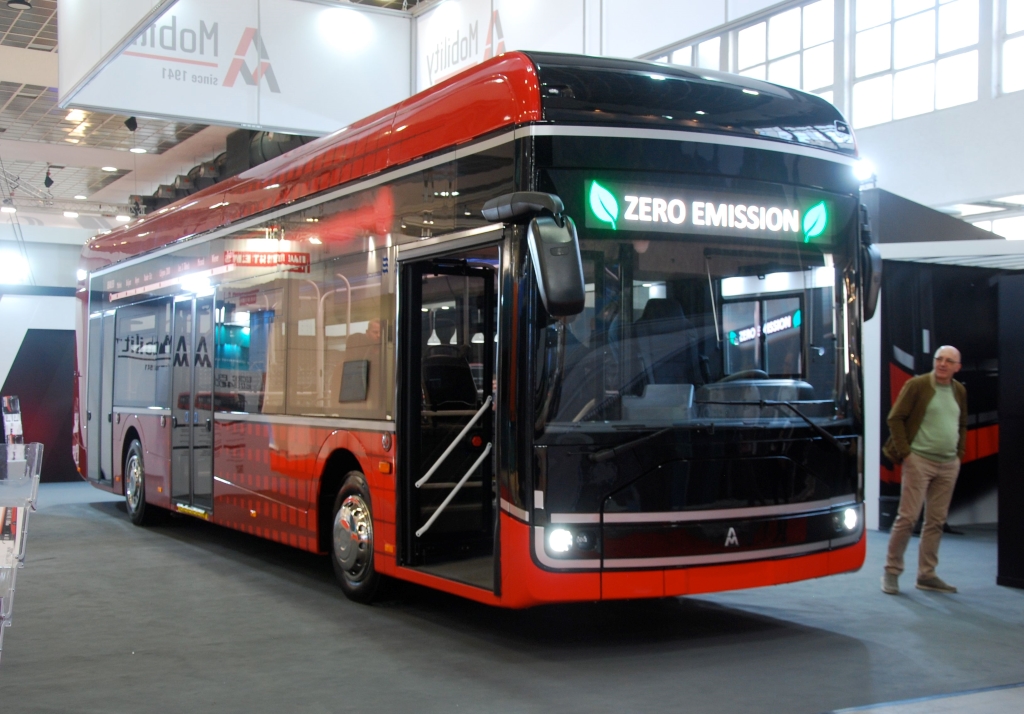
Caetano
The Portuguese specialist for hydrogen buses presented itself rather modestly at the edge of Hall 8, although it is one of the big players in the field of buses with fuel cells. They presented the now well-known “H 2 City Gold” city bus, which has long been used successfully in Germany, for example in Bielefeld. The fuel cell in the “H 2 City Gold” comes from the Japanese manufacturer Toyota, whose brand logo is also emblazoned on the front of Caetano’s hydrogen buses. Toyota is also a co-owner of Caetano. This is also reflected in the fact that Toyota Germany in Cologne is also responsible for the sale of Caetano buses in Germany. A Caetano demonstration vehicle, which was tested at various German transport companies (such as Regionalverkehr Köln), was (naturally) registered to Toyota Deutschland in Cologne.
Together with Temsa from Turkey, Caetano had brought something special to Busworld: a hydrogen-powered coach. It travels further than a battery bus and is therefore more suitable for travelling with the current state of the art.
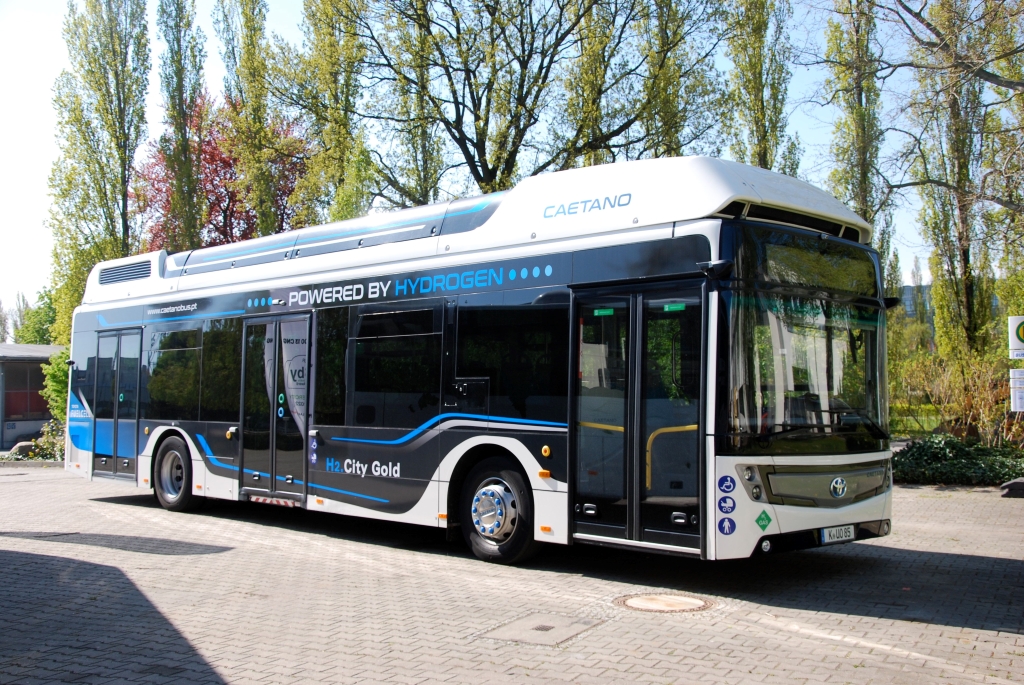
In Villeurbanne near Lyon, the company Navya was founded last decade, specialising in the development and construction of self-driving autonomous minibuses. One day, they will be able to drive on the roads completely autonomously and without a driver, although an “operator” will still need to be on board for safety reasons to be able to intervene should this become necessary. Navya also sells vehicles successfully, for example to Contern in Luxembourg (Sales-Lentz, Bascharage), to the Swiss Post for the cantonal capital of Sion in Valais, to Florida in the USA, to the United Arab Emirates and to Newcastle in Australia. A demonstration vehicle is being used for some time on the island of Sylt.
The Navya “Arma” model in Contern, Luxembourg, serves a line between the “Campus Contern” industrial area and Sandweiler / Contern railway station. In January 2019, the author took the opportunity to take a ride in the car. The little one does what it is supposed to – even if it is only travelling slowly. Although it could certainly go faster at 40 km/h, European laws do not yet permit this. And it turns out that it’s a good thing that the operator is still on board: there are a few junctions on the route with the right before left rule. The Navya recognises the junction, but doesn’t know whether anyone is coming. So it stops. And the operator has to give him the order to drive on. At one point, there is a rather thick tree on the right, right next to the carriageway. It “frightens” little Navya and he “fearfully” stops here too. Until the operator gives the order to drive on.
Well, that was almost five years ago. The technology has made progress in the meantime, the programming has been improved …
Although the “Arma” does what it is supposed to do and customers have already been found for more than 220 trolleys (Sales-Lentz now has six of these trolleys, with a total of 17 in Luxembourg and 16 in Germany, for example), Navya will have to file for insolvency in spring 2023. The fact that the concept is nevertheless convincing is shown by the fact that a new company, “Gama”, is founded immediately – in April 2023 – with the sole purpose of taking over and continuing Navya.
Gama has two shareholders: the French technology company Gaussin, which holds a 51% stake, and the Japanese company Magnica, which holds a 49% stake.
In the meantime, the little Navya has been further developed so that it can travel “bidirectionally”, i.e. forwards and backwards, and therefore does not have to make a loop at the final stop for the return journey. It can simply start “from the spot” in the opposite direction. This is actually quite logical, because unlike a combustion engine, an electric motor doesn’t care whether it turns clockwise or anti-clockwise.
Gama sees its task not only in building and further developing the little Navya, but above all in decisively advancing the software for autonomous driving. For example, the company also supplies the software for the autonomous shuttle of French manufacturer Bluebus. (Which was on show at the trade fair in Brussels on a stand just a few metres away).
Gama employs 150 engineers in software development alone.
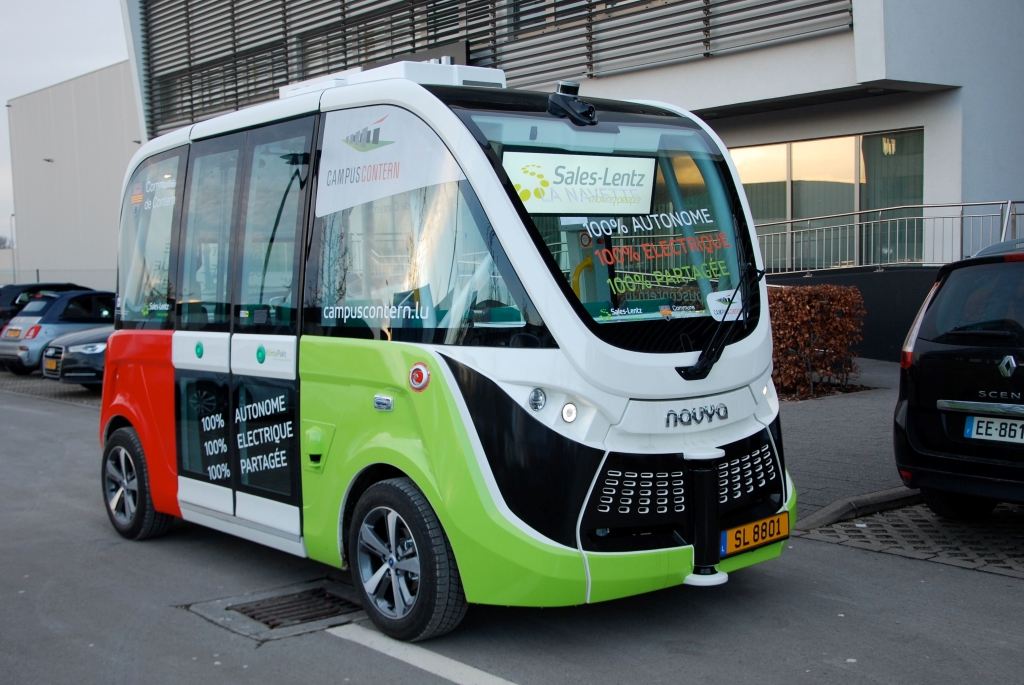
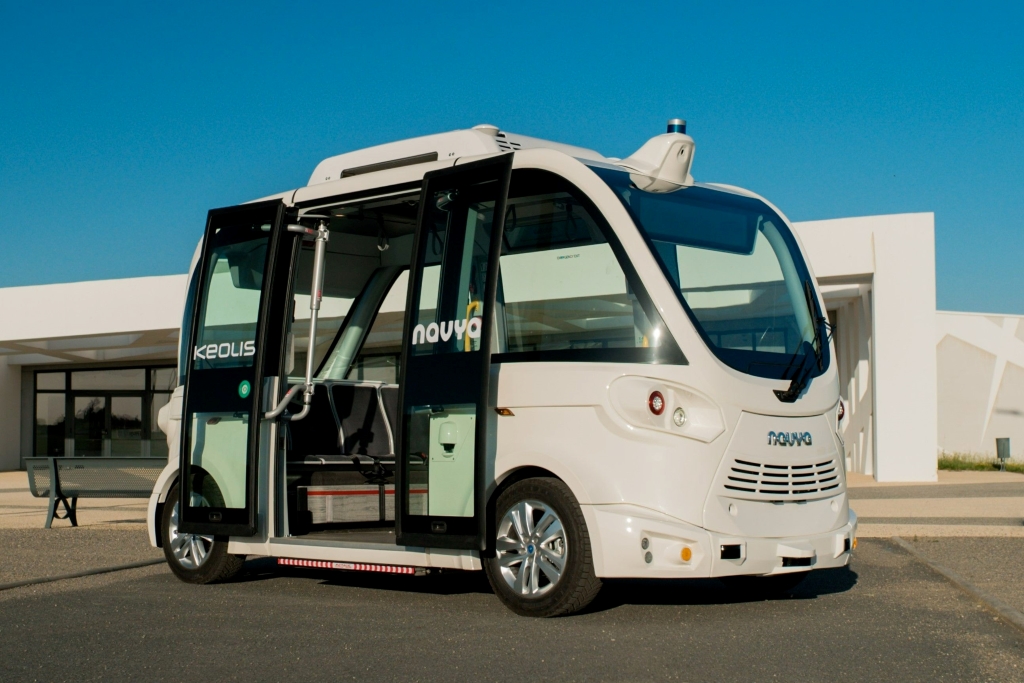
Geyushi
You’ve never heard the name of this bus manufacturer? No wonder, because Geyushi comes from Egypt. And while people in this country didn’t even know that cars were built in Egypt until recently, Geyushi is now the second bus builder from the country on the Nile to come to Europe within a short space of time after MCV (with MCV Germany in Brilon, North Rhine-Westphalia).
Under the motto “Introducing Geyushi”, the manufacturer, which is based in Cairo and has a factory in El-Sharkia in Brussels, presented its “Eco Bus” city bus – as well as the “Nubia” midi coach and the large “Luxor” coach.
Here we are interested in the “Eco Bus” electric city bus. It is 12,000 mm long, the usual 2,550 mm wide and 3,300 mm high. Its wheelbase (distance from axle 1 to axle 2) is rather large, measuring 6,100 mm. The batteries come from the Chinese global market leader CATL and work with the cell chemistry LFP (lithium iron phosphate). They have a capacity of 373 kWh and have found their place partly under the vehicle floor in the rear and partly on the roof. In the rear with the batteries under the floor, the interior height is 1,900 mm, otherwise 2,400 mm. However, this means that even in the rear, only very tall people have to tuck their heads in a little.
The “Eco Bus” offers up to 49 seats. This depends on which seating variant the customer chooses between the two axles. Here, Geyushi offers everything the customer could wish for, from “full seating” including seats opposite the centre door to a large “special use area” (for wheelchairs, pushchairs, bicycles and/or standing passengers). As a genuine city bus, the vehicle has two double-width doors at the front by the driver and in the centre of the vehicle.
Geyushi’s electric city bus has a permissible total weight of 19,500 kg and thus perfectly fulfils the European registration requirements.
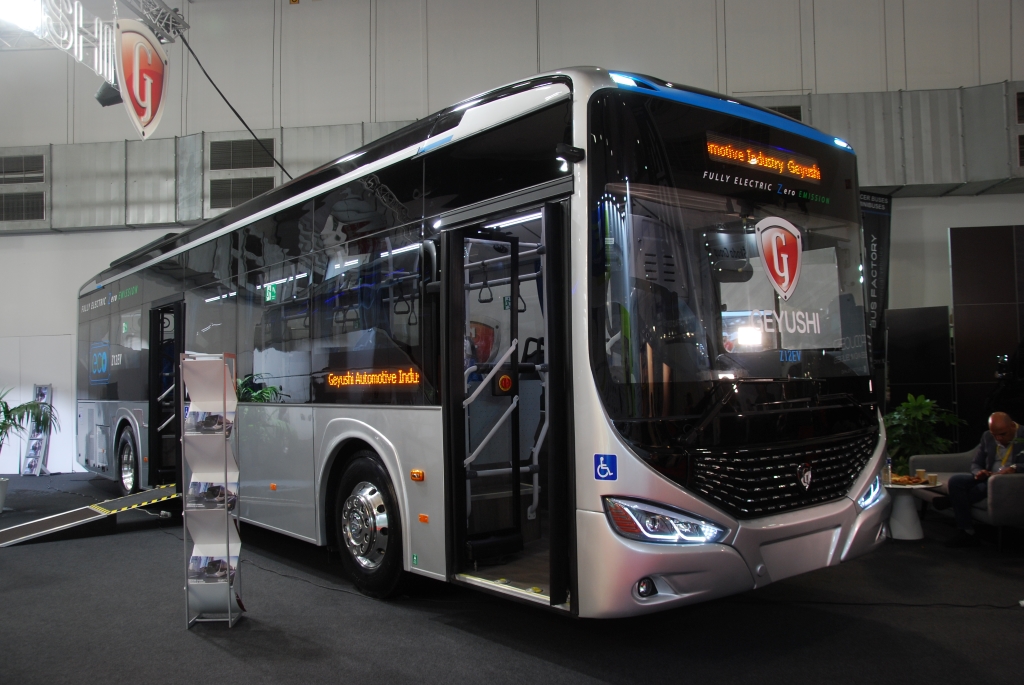
Ikarus
One of the oldest bus manufacturers in the world is Ikarus from Hungary, founded in the last century. At the time when the world was divided into East and West, Ikarus even became the third largest bus manufacturer in the world, because the “Council for Mutual Economic Assistance” (CMEA) had decided that buses in the “Eastern Bloc” should primarily come from Ikarus. The reason for this decision was simple and logical: the larger the quantities, the lower the unit costs for the individual vehicle, and the cheaper each individual bus could be produced.
However, this also led to Ikarus losing its technological edge due to a lack of competition. In the GDR, the Trabant and Wartburg died as a result after the “reunification”, and Ikarus lost customers in the bus sector in the 1990s. Attempts to restart the company with new products (such as the Ikarus 405 midibus or the Ikarus 417 articulated bus) failed, the takeover by Iveco also proved unsuccessful, and so in 2008 the lights finally went out at Ikarus.
Shortly afterwards, however, Hungarian industrialist Gabor Szeles and his Chinese partner CRRC (China Railroad Rolling stock Company) began to revitalise Ikarus. The result was the new “Ikarus 120 e” electric bus, a self-supporting twelve-metre-long city bus with an electric motor from CRRC, which Ikarus is already selling successfully. It has already been used as a demonstration vehicle by several German transport companies; Meininger Bus Betriebe (MBB) from Thuringia took two vehicles permanently into their fleet this year (“SM-B 2336 E” and “SM-B 2337 E”), having previously leased two other Ikarus 120 e vehicles for a longer period of time.
Ikarus had brought the prototype of its electric midibus “Ikarus 80 e” with it to Brussels. The type designation says it all: the vehicle is (around) 8.5 metres long. It has two doors, one single-width door at the front and one double-width door in the centre of the vehicle. It is designed for 55 passengers, 18 of whom can be seated. It is available with engine outputs of 100 kW (equivalent to 130 hp) or 170 kW
(equivalent to 231 hp), and its batteries from Chinese manufacturer CATL have a capacity of 282 kWh.
Ikarus will soon be presenting a new generation of its “120 e” and, above all, its first low-floor electric articulated bus, the “180 e”.
The sales partner for Germany, Luxembourg, Austria and Switzerland is Trasco GmbH in Bremen. At the trade fair, it was reported that the two largest bus companies from Luxembourg had shown great interest in the “80 e”.
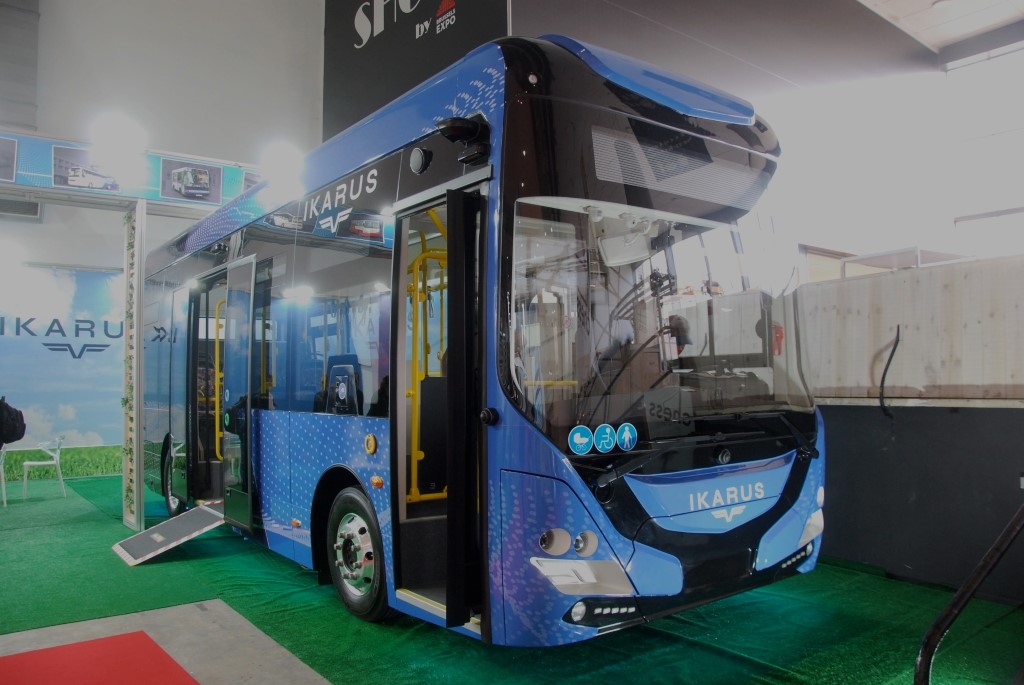
Skoda
Skoda, a veteran of the public transport sector, has a certain “problem” with its buses. Namely that it does not build its own buses. Instead, they take bodyshells from other manufacturers, turn them into electric or trolleybuses, “screw” their own Skoda logo “on the front” and then market the finished vehicle as a Skoda and under a Skoda type designation. To do this, they like to use bodyshells from the manufacturers Solaris, Iveco, the group’s sister company Temsa and, more recently, increasingly also those from the Czech bus manufacturer SOR from Libchavy. Note: this is particularly astonishing in the case of Solaris, because Solaris itself can build complete electric, trolley and hydrogen buses. Which they also sell with good success (market leader in Europe for battery buses and very strong in hydrogen buses).
At Busworld, Skoda presented a battery bus based on the SOR LF 12. 12 metres long, the low-floor bus is designed for overnight recharging at the depot. It is powered by the five-phase Skoda IPMSM three-phase motor, which operates highly efficiently over a wide speed range and even under heavy loads with many passengers. The (in the author’s opinion) visually appealing body is deliberately designed for a low tare weight and in such a way that it makes optimum use of the limited space available in a bus.
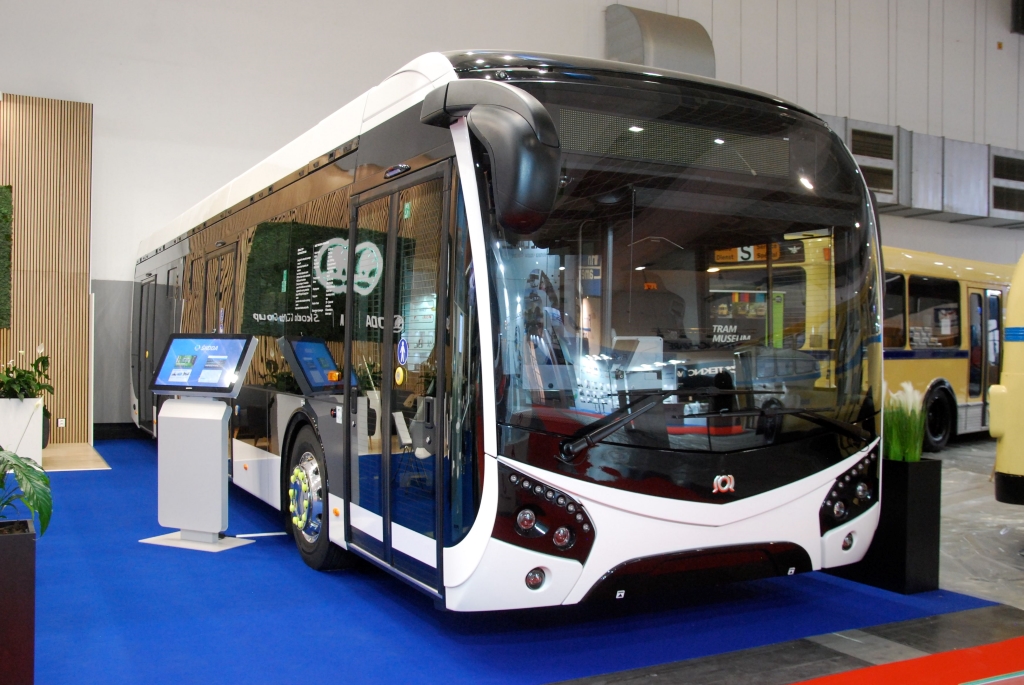
Zeroid
Zeroid was one of the exhibitors in Hall 8 that was attending Busworld for the first time. The company from Montmeló near Barcelona has essentially specialised in offering electric vans the size of an Iveco Daily or a Mercedes Sprinter. And they are also available as an “eUrban” city bus.
Zeroid brought such an “eUrban” to Brussels. The visually appealing, 7.5 metre long vehicle is designed for 22 passengers, 15 of whom can sit and 7 of whom can stand. Its electric motor has an output of 150 kW and the batteries have a capacity of 120 or 140 kWh, depending on customer requirements. Naturally, the larger battery capacity also increases the range of the vehicle. The permissible total weight of the “little one” is 6.5 tonnes, which is quite considerable for a bus of this size.
